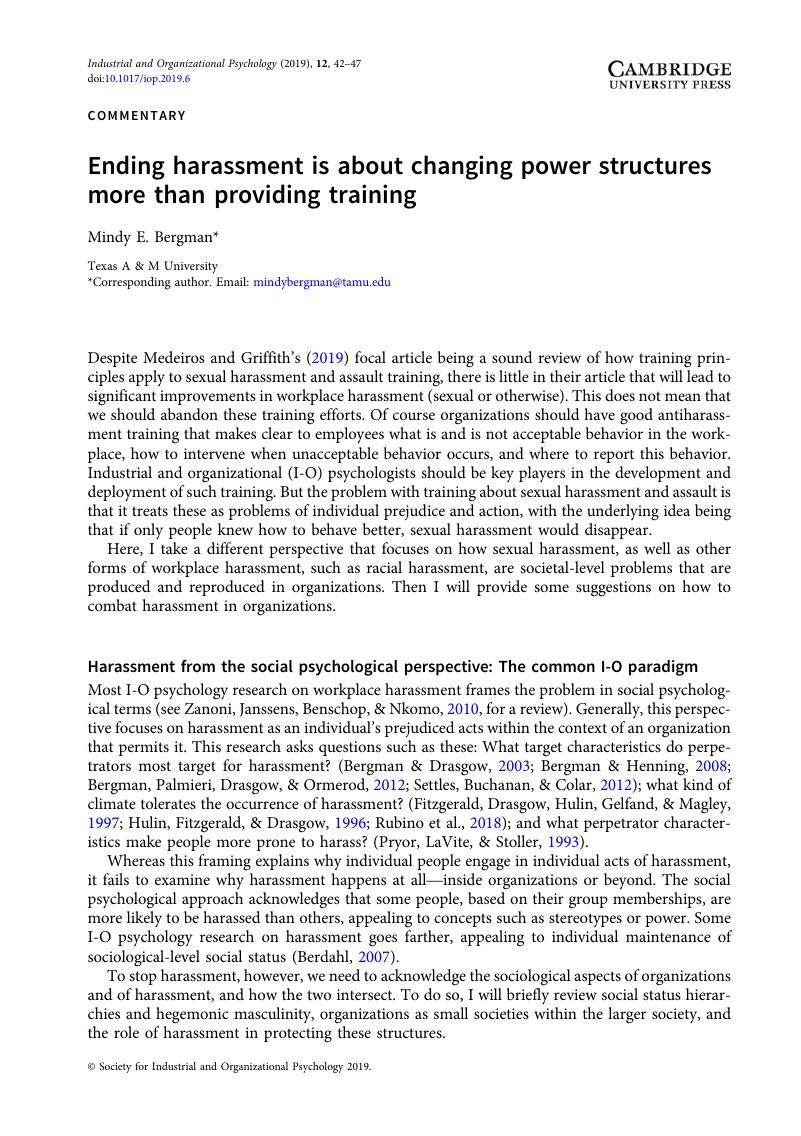Crossref Citations
This article has been cited by the following publications. This list is generated based on data provided by Crossref.
Hernandez, Theresa R.
Bergman, Mindy E.
and
Liu, Sin-Ning Cindy
2020.
Why is training the only answer?.
Industrial and Organizational Psychology,
Vol. 13,
Issue. 2,
p.
147.
Zelin, Alexandra I.
and
Magley, Vicki J.
2020.
Handbook of Interpersonal Violence and Abuse Across the Lifespan.
p.
1.
Zelin, Alexandra I.
and
Magley, Vicki J.
2022.
Handbook of Interpersonal Violence and Abuse Across the Lifespan.
p.
3941.
Allen, Tammy D.
Miller, Michelle Hughes
French, Kimberly A.
Kim, Eunsook
and
Centeno, Grisselle
2023.
Faculty Time Expenditure Across Research, Teaching, and Service: Do Gender Differences Persist?.
Occupational Health Science,
Vol. 7,
Issue. 4,
p.
805.
Claesson, Annina
2023.
“I Really Wanted Them to Have My Back, but They Didn’t”—Structural Barriers to Addressing Gendered Online Violence against Journalists.
Digital Journalism,
Vol. 11,
Issue. 10,
p.
1809.





